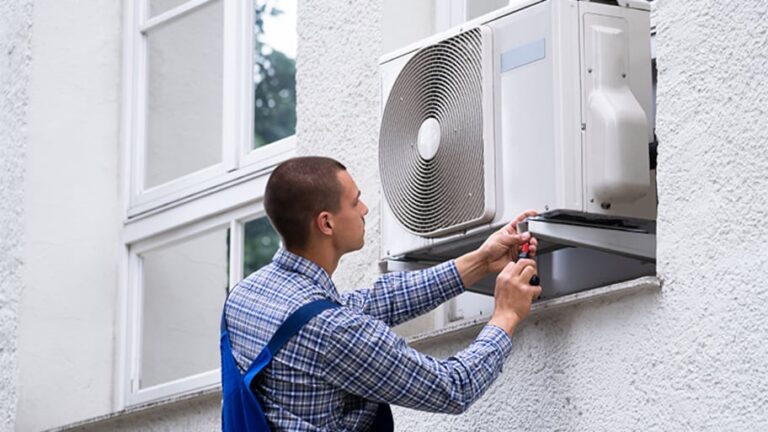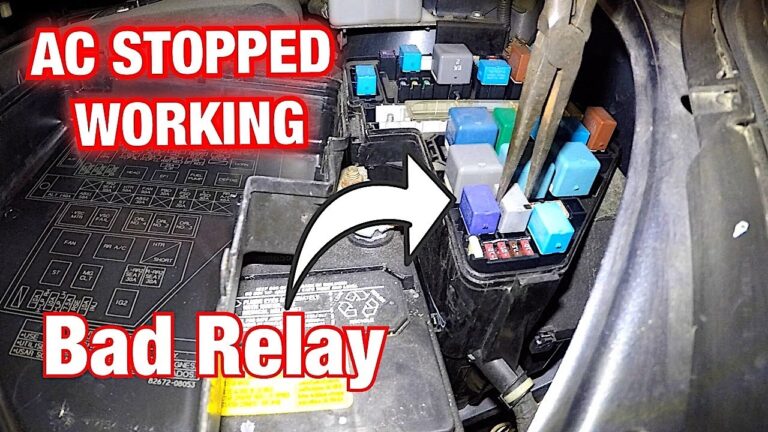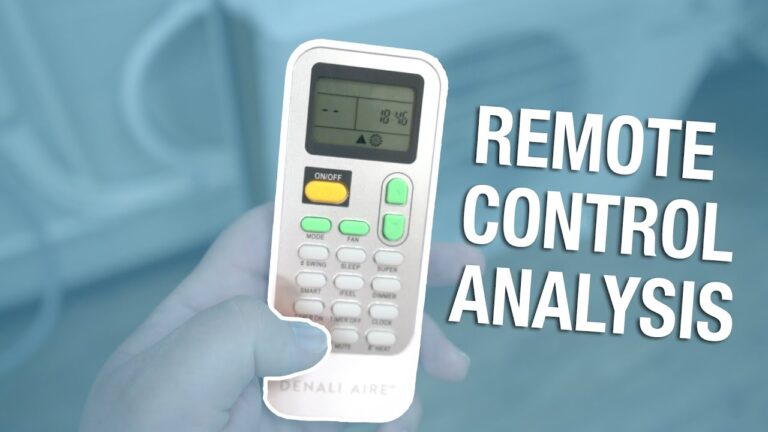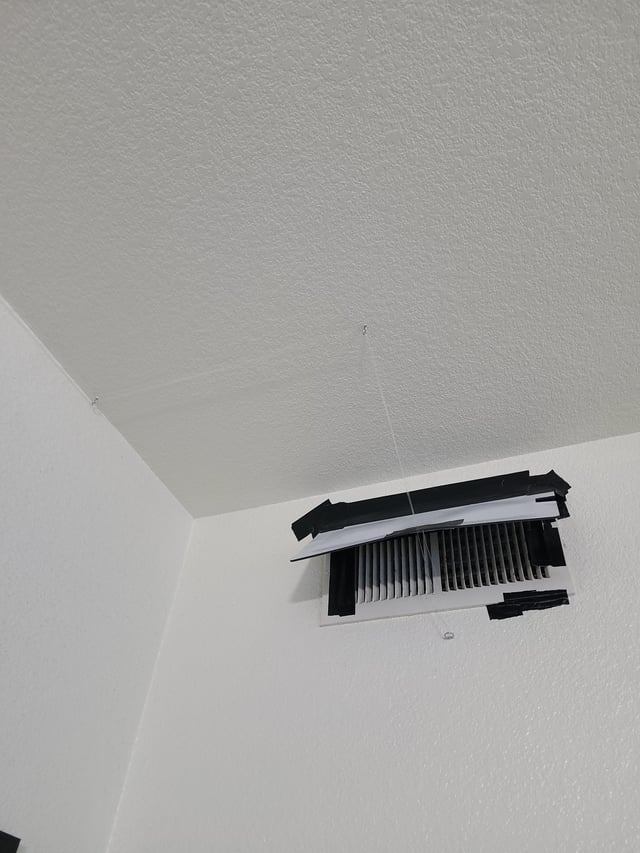Why is My Ac Gauge in the Red?: Troubleshooting Tips and Solutions
If your AC gauge is in the red, it indicates that the refrigerant in your system is too hot, potentially due to a problem with the compressor or other components. This issue requires immediate attention to prevent further damage to the AC system.
It is recommended to consult with a professional mechanic for proper diagnosis and repair. Neglecting this issue can lead to reduced cooling efficiency and potential AC system failure. Act quickly to address the problem and ensure optimal performance of your air conditioning unit.
Understanding Ac Pressure: What Does The Red Gauge Indicate?
If your AC gauge is in the red, it indicates that the pressure of your AC system is too high. This could mean there is a refrigerant leakage or a diminishing amount of refrigerant, both of which require immediate attention to prevent further damage.
C gauge in your vehicle’s air conditioning system reads in the red, it’s indicating that the pressure is above the normal range. Understanding AC pressure gauge readings is crucial for diagnosing and resolving any potential issues with your AC system.
Let’s delve into the significance of AC pressure gauge readings and what the red range indicates.
The Significance Of Ac Pressure Gauge Readings:
- AC pressure gauges provide vital information about the state of your AC system.
- They measure the pressure of the refrigerant within the system, which is critical for proper functioning.
- The readings help identify any irregularities or issues that may be affecting the performance of your AC system.
- Abnormal readings can point to problems such as leaks, blockages, or overcharging.
The Red Range On The Ac Gauge And Its Implications:
- When the AC gauge enters the red range, it signifies that the pressure in the system is excessively high.
- High pressure can cause various problems, including strain on the compressor, decreased cooling capacity, and potential damage to the AC system components.
- The red range on the gauge acts as a warning sign that something is amiss and requires attention.
- It is essential to address the high-pressure issue promptly to prevent further damage and costly repairs.
Remember, if your AC gauge is consistently in the red range, it is crucial to consult a professional technician who can accurately diagnose and resolve the problem. Ignoring high-pressure readings can lead to more significant issues down the line.
Next time you check your AC gauge and find it in the red range, take it as a sign to address the issue promptly. Consulting a professional will ensure that your AC system is functioning optimally, keeping you comfortable on even the hottest of days.
Reasons For Ac Gauge In The Red And How To Troubleshoot
If your AC gauge is in the red, it could indicate a problem with high AC pressure. This could be caused by a refrigerant leakage or an overcharged system. It is important to address these issues promptly to ensure proper AC operation.
:
Insufficient refrigerant levels: Causes and solutions:
- Insufficient refrigerant levels can cause the AC gauge to go into the red zone, indicating a low pressure in the system.
- Causes of insufficient refrigerant levels include refrigerant leaks, improper installation, or a malfunctioning AC compressor.
- To troubleshoot this issue, you can follow these steps:
- Check for signs of refrigerant leaks, such as oily residue or hissing sounds.
- Repair any identified leaks and ensure the system is properly sealed.
- Recharge the system with the appropriate amount of refrigerant, as per manufacturer’s specifications.
Identifying refrigerant leaks:
- Refrigerant leaks can lead to a decrease in refrigerant levels, causing the AC gauge to show low pressure.
- Signs of refrigerant leaks include greasy residue around fittings or connections, hissing sounds from the AC system, or reduced cooling performance.
- Identifying the exact location of the leak can be challenging, but here are some methods to detect leaks:
- Visual inspection for signs of oil or refrigerant residue.
- Using an electronic leak detector to identify leaks.
- Conducting a UV dye test by injecting a UV dye into the system and inspecting for leaks under UV light.
Steps to fix refrigerant leaks and recharge the system:
- Fixing refrigerant leaks is essential to ensure proper AC system performance and prevent further damage.
- Here are the steps to fix refrigerant leaks and recharge the system:
- Identify and repair the leak. This may involve replacing faulty components, tightening fittings, or resealing connections.
- Evacuate the system using a vacuum pump to remove any moisture or air.
- Recharge the system with the appropriate amount of refrigerant according to manufacturer’s specifications using the AC gauge.
Overcharged AC system: Causes and solutions:
- An overcharged AC system can also cause the AC gauge to go into the red zone, indicating high pressure.
- Causes of an overcharged AC system include adding too much refrigerant or a malfunctioning pressure sensor.
- To troubleshoot this issue, follow these steps:
- Check the AC system’s refrigerant levels using the gauge and compare it to the manufacturer’s recommended amount.
- If the system is overcharged, you will need to remove the excess refrigerant. This can be done by using a recovery machine or seeking professional help.
- Inspect the pressure sensor or AC gauge for any malfunctions. If necessary, replace the faulty components.
Symptoms of an overcharged AC system:
- It’s important to recognize the symptoms of an overcharged AC system to prevent further damage and ensure proper cooling performance.
- Symptoms include:
- Reduced cooling efficiency.
- Excessive pressure in the system.
- Increased energy consumption.
- Potential damage to the AC compressor.
Steps to resolve overcharged AC system issues:
- If you suspect an overcharged AC system, following these steps can help resolve the issue:
- Verify the refrigerant levels using the AC gauge and compare it to the manufacturer’s recommendations.
- If the system is overcharged, you will need to remove the excess refrigerant. Seek professional assistance or use a recovery machine.
- Inspect the pressure sensor or AC gauge for any malfunctions. Replace the faulty components if necessary.
Other potential causes for AC gauge in the red:
- In addition to insufficient refrigerant levels and an overcharged AC system, there are other potential causes for the AC gauge to show in the red zone.
- These causes may include:
- Clogged or restricted components, such as a dirty condenser or evaporator coil.
- A malfunctioning AC compressor, which can result in improper pressure readings.
- Faulty pressure sensor or AC gauge, causing inaccurate readings.
- If you have ruled out insufficient refrigerant levels and an overcharged system, consider these potential causes and consult a professional for further diagnosis and repair.
Preventive Measures And Tips For Maintaining Proper Ac Pressure
If the gauge on your AC reads red, it indicates that there may be an underlying issue with your AC system. The high pressure could be caused by overcharged refrigerant or a refrigerant leakage, both of which require immediate attention from a professional.
Regular Maintenance Practices To Avoid Ac Gauge Red Zone:
- Schedule regular air conditioning system maintenance at least once a year to avoid any potential issues.
- Clean or replace air filters every few months to ensure proper airflow and reduce strain on the system.
- Check and clean the outdoor condenser unit regularly to remove any debris or obstructions that can impact its performance.
- Inspect and clean the evaporator coils to remove any dirt or dust buildup that can hinder proper heat exchange.
- Keep the area around the condenser unit clear of any objects or vegetation that can obstruct airflow.
Importance Of Professional Hvac Inspections:
- Professional HVAC inspections are crucial to identify any potential issues with your AC system before they escalate.
- HVAC technicians are trained to detect and fix problems that may not be immediately apparent or visible to homeowners.
- Regular inspections can help prolong the lifespan of your AC system and ensure optimal performance.
- Professional inspections can also help identify and address any potential safety hazards that may exist within the system.
Steps To Maintain Optimal Ac System Performance:
- Ensure that the refrigerant levels in your AC system are within the manufacturer’s recommended range.
- Keep an eye on the pressure readings on your AC gauge to avoid pressure levels going into the red zone.
- Monitor the temperature and humidity levels in your home to ensure optimal comfort and prevent strain on the system.
- Regularly clean and maintain the indoor and outdoor coils to ensure efficient heat transfer.
- Consider installing a programmable thermostat to optimize energy usage and maintain consistent temperatures.
- Seek professional help if you notice any unusual noises, odors, or inconsistent cooling from your AC system.
Remember, following these preventive measures and tips for maintaining proper AC pressure can help you avoid potential issues that may lead to your AC gauge going into the red zone. Regular maintenance practices and professional inspections are key to ensuring optimal AC system performance and prolonging its lifespan.

Credit: gomechanic.in
Frequently Asked Questions For Why Is My Ac Gauge In The Red
Why Is My Car Ac Pressure Too High?
If your car AC pressure is too high, it may indicate leakage or low refrigerant levels, both of which require immediate attention.
What Causes Low Side Ac Pressure Too High?
Overcharged refrigerant can cause low side AC pressure to be too high, indicating possible leakage or insufficient refrigerant levels.
How Do I Get The Pressure Out Of My Car Ac?
To release pressure from your car AC, you can fix an overcharged A/C system by using an A/C pro gauge. If the pressure is persistently too high, it may indicate leakage or a low level of refrigerant. In such cases, it’s best to seek immediate attention from a mechanic.
What Happens If Car Ac Is Overcharged?
When the car AC is overcharged, it can cause issues with the system, such as leakage or a diminishing amount of refrigerant. This requires immediate attention from a mechanic. (20 words)
Conclusion
Ondenser fan and make sure it is working properly. If the fan is not running, it can cause the pressure to rise on the low side, leading to the AC gauge being in the red zone. Another possible cause for the AC gauge being in the red is an overcharged AC system.
When there is an excessive amount of refrigerant in the system, it can cause the pressure to increase and the gauge to read in the red. In this case, it is important to have the AC system properly serviced to remove the excess refrigerant.
It is also possible that there may be other underlying issues with the compressor or other parts of the system that are causing the refrigerant to become too hot, resulting in the AC gauge being in the red. If you are experiencing this issue, it is recommended to take your car to a mechanic for further inspection and repair.







